Programming with Python opens up many possibilities that go beyond simple scripts. A central component in object-oriented programming is working with classes. They form the basis for objects and allow you to create and manage complex data structures. In this guide, you will learn how to define your own classes in Python to effectively utilize their properties and methods.
Key Insights
- Classes are the key to object-oriented programming in Python.
- An initializer (constructor) allows you to define specific properties when creating a class.
- Methods in classes allow you to encapsulate functions that work on the object's properties.
- Accessing properties is done using the dot operator.
Step-by-Step Guide
Let's start with the basics of class construction in Python. First, you need to define a new class using the keyword class. You can do this in your Python code as follows:
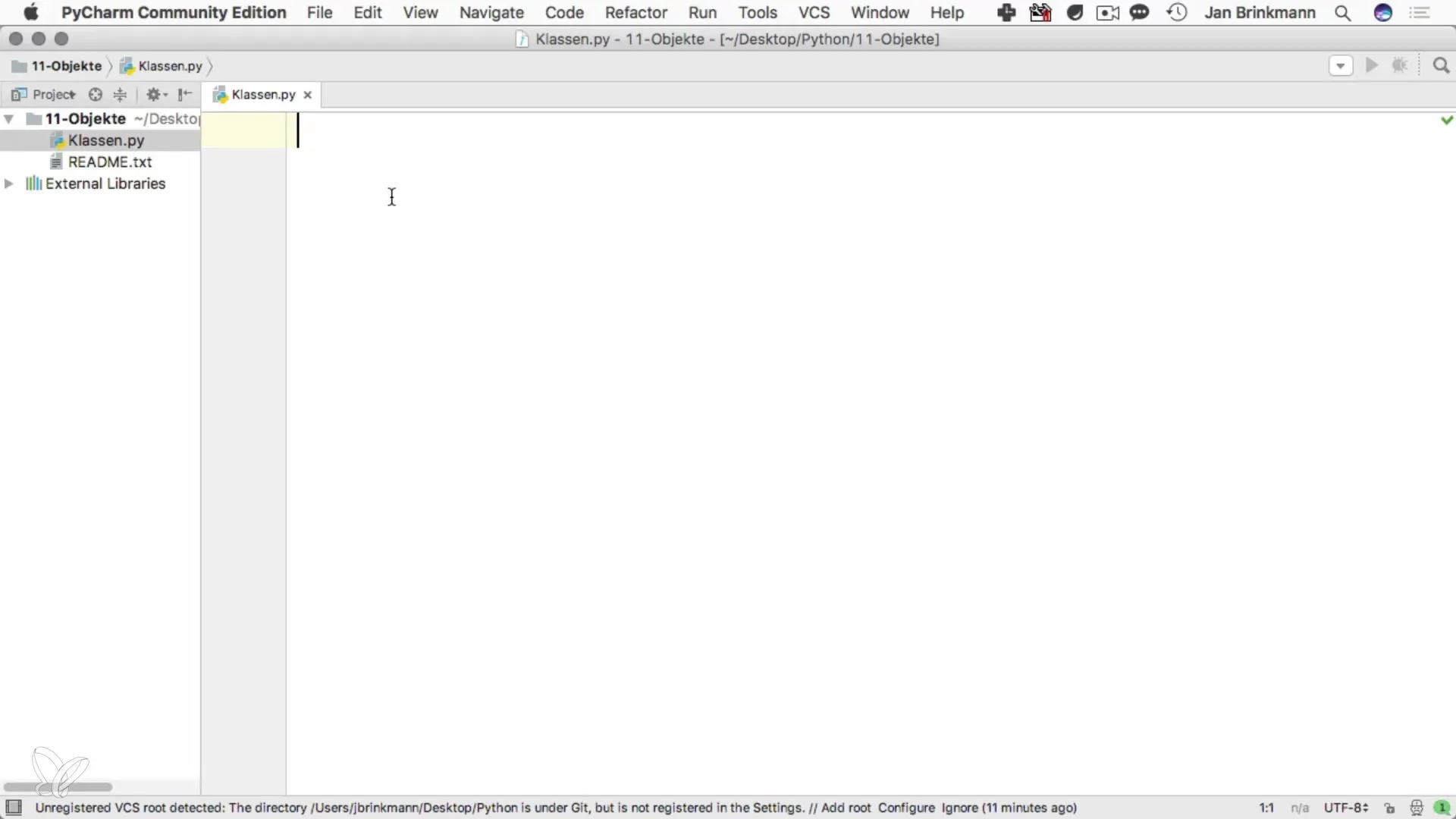
Here we have an empty class named Employee. You can define it initially without parameters, which means that the class is created without specific initialization. This is an important foundation to ensure that you do not encounter errors when creating objects later on.
Now create an object of this class. To do this, simply use the class name and set empty parentheses:
In this case, we have an Employee object that we just created. The next step is to expand the class with properties. For example, you could add a name to the Employee class.
First, you need to define an initializer that serves as the constructor of your class. This is done with the __init__ method.
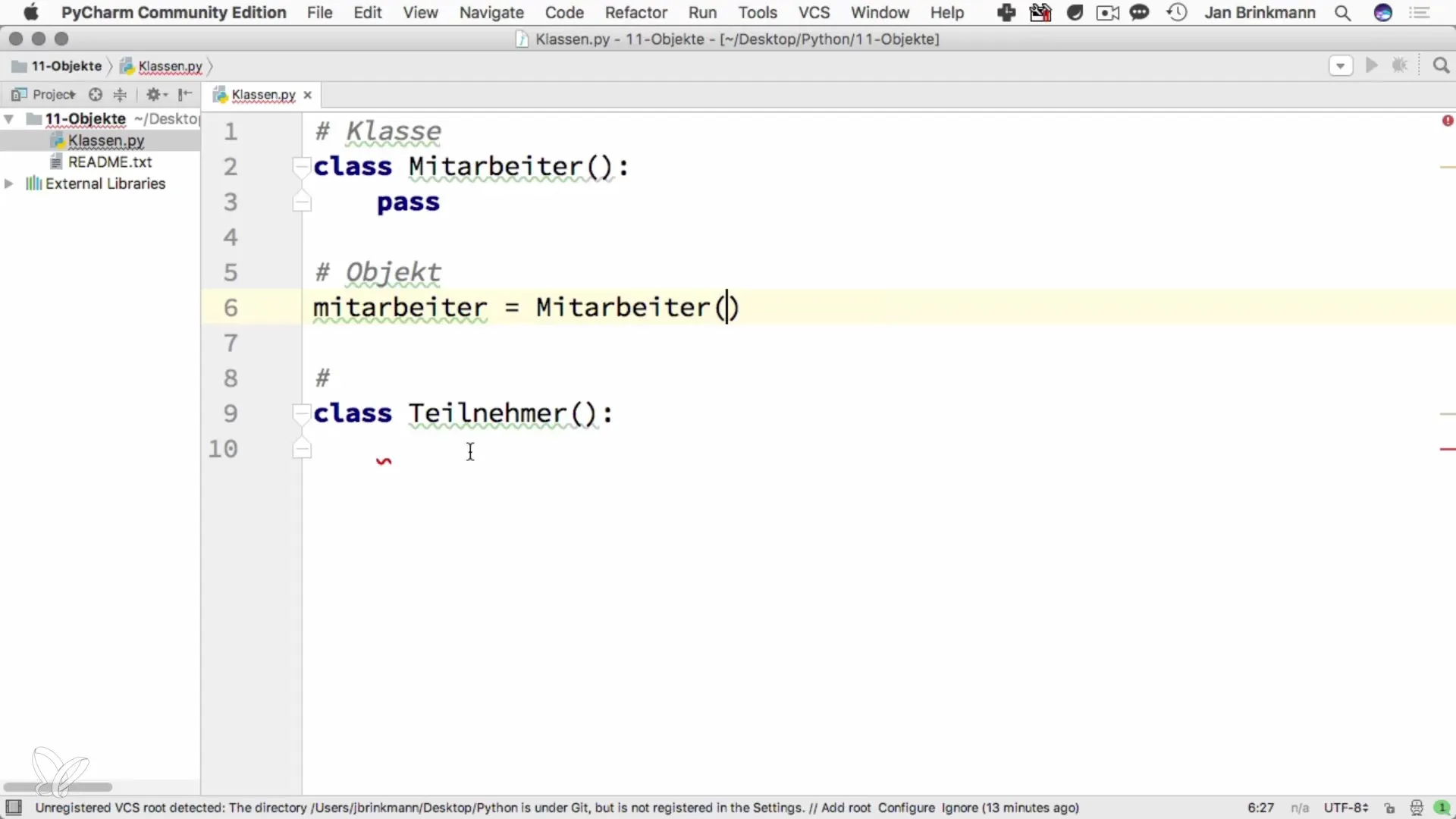
Here you see how an __init__ constructor is defined. We pass the name as a parameter and use self to store the name for the current object.
Now that you have a property, you can pass a name directly when creating an object:
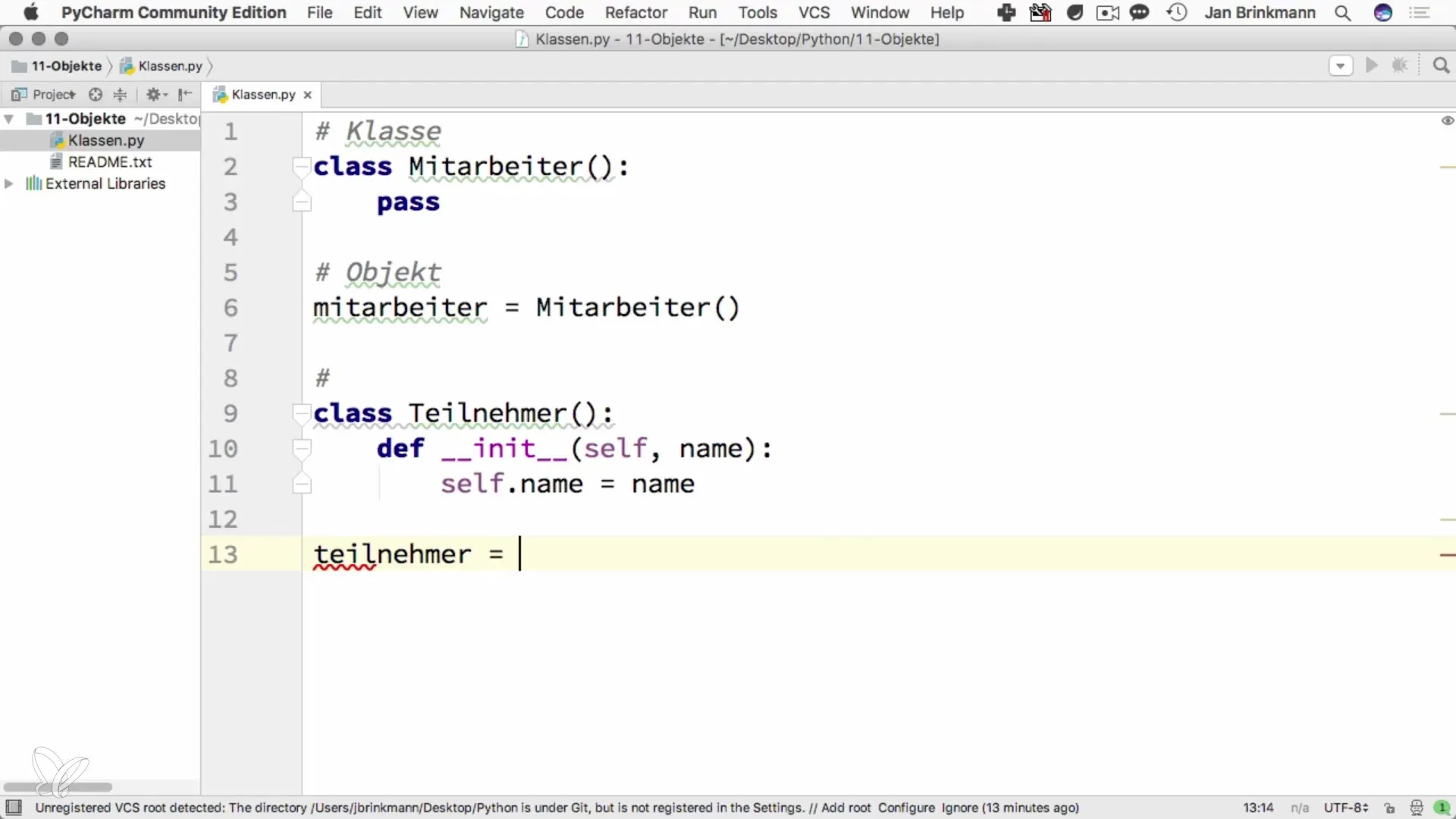
If you now create the object participant with the name "Jan", the name is stored in the instance. You can use autocomplete to check if the name was set correctly.
To utilize the properties, you can call them using the dot operator:
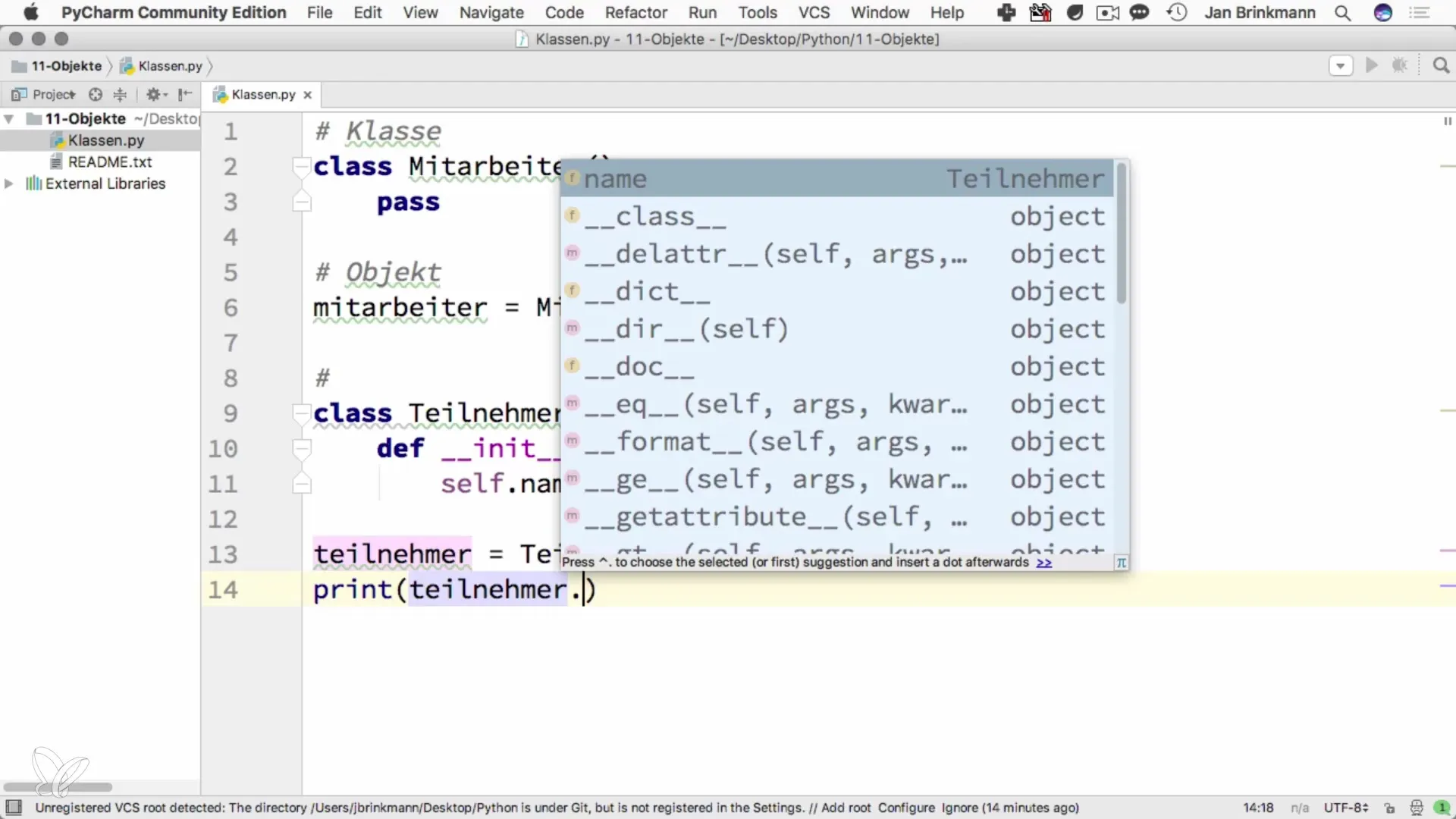
This is where you can access the properties of your object. In this case, you're printing out the name of the participant.
In addition to properties, you can also implement methods. Creating a method works similarly to defining a function:
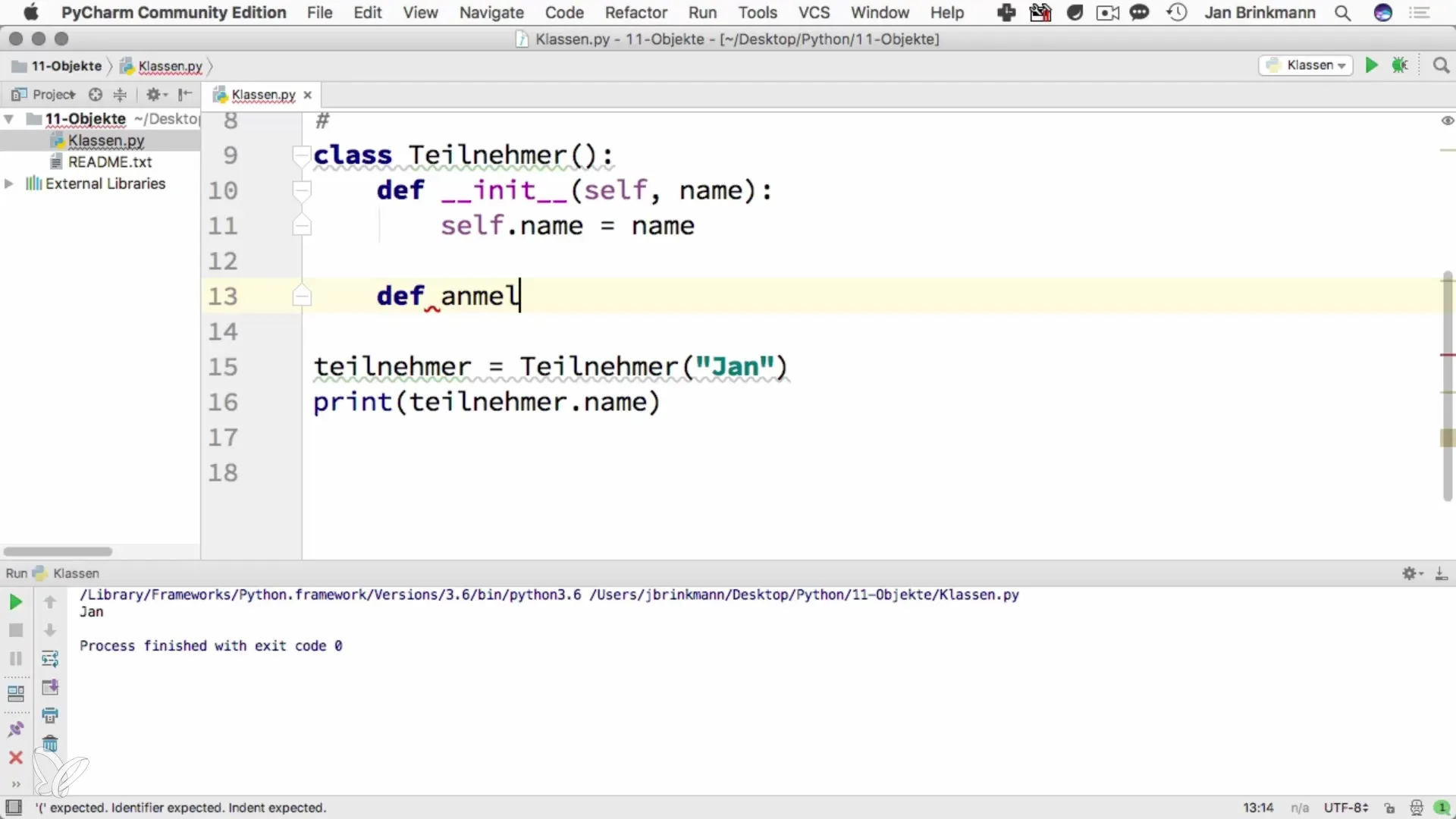
Here you define the method register. Again, note that self is automatically passed as a parameter to the method to access the instance. In the registration, for example, we could print a success message:
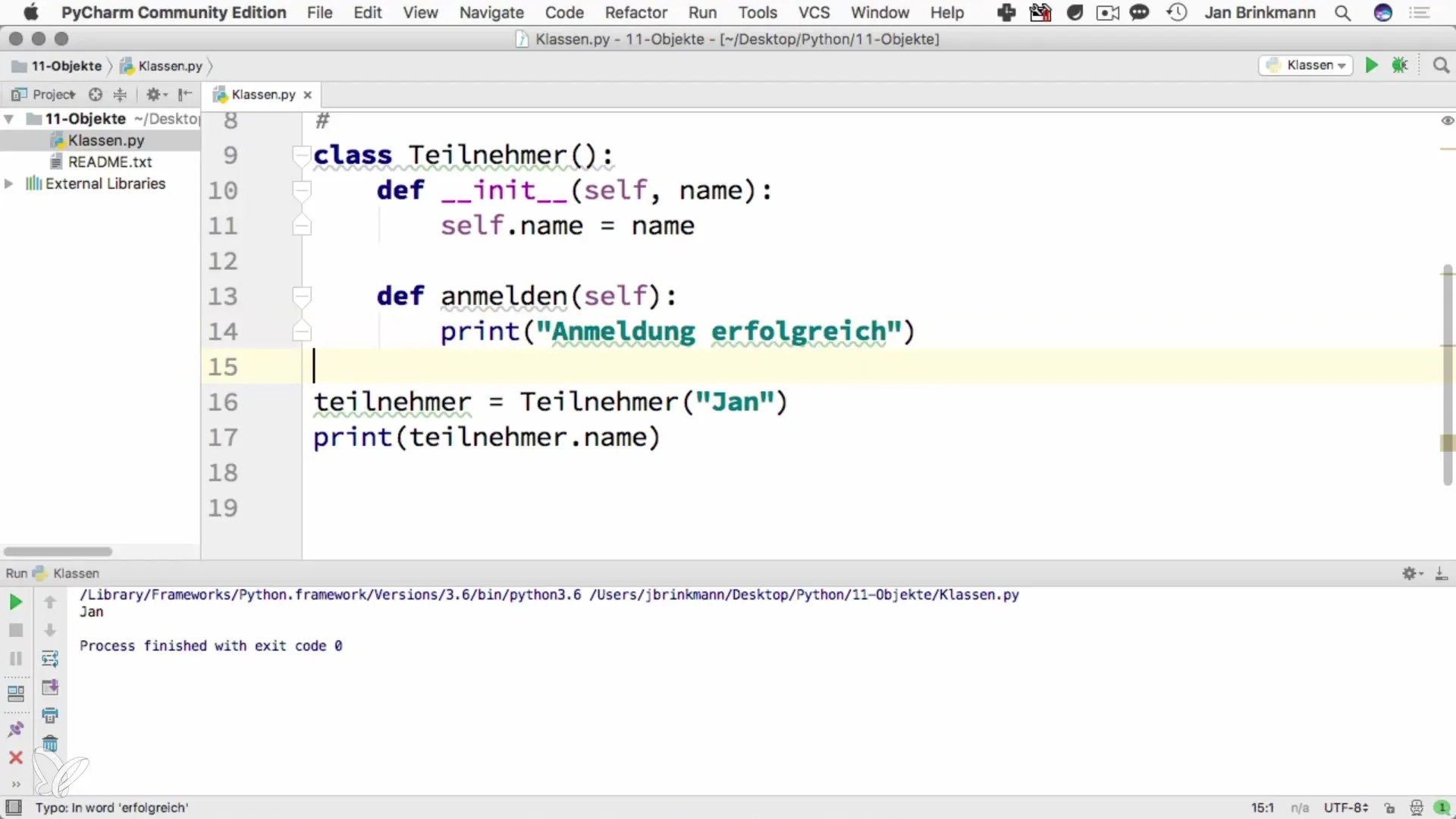
When you call the register method, it looks like this:
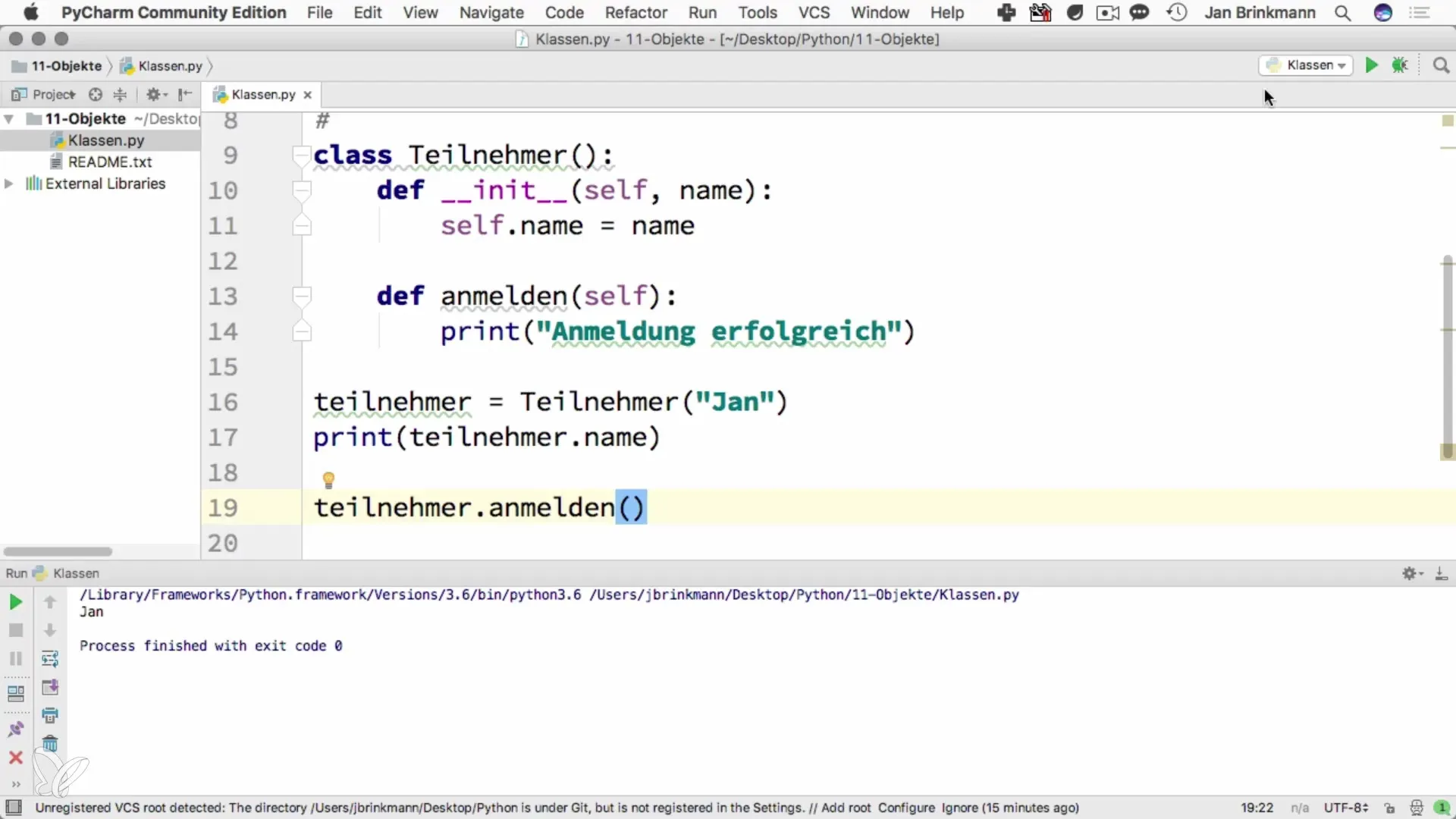
Here you call the method on the participant instance, which provides feedback on the registration.
Finally, we can also pass parameters to methods, similar to functions. For example, a method unregister that expects a parameter for early unregistration:
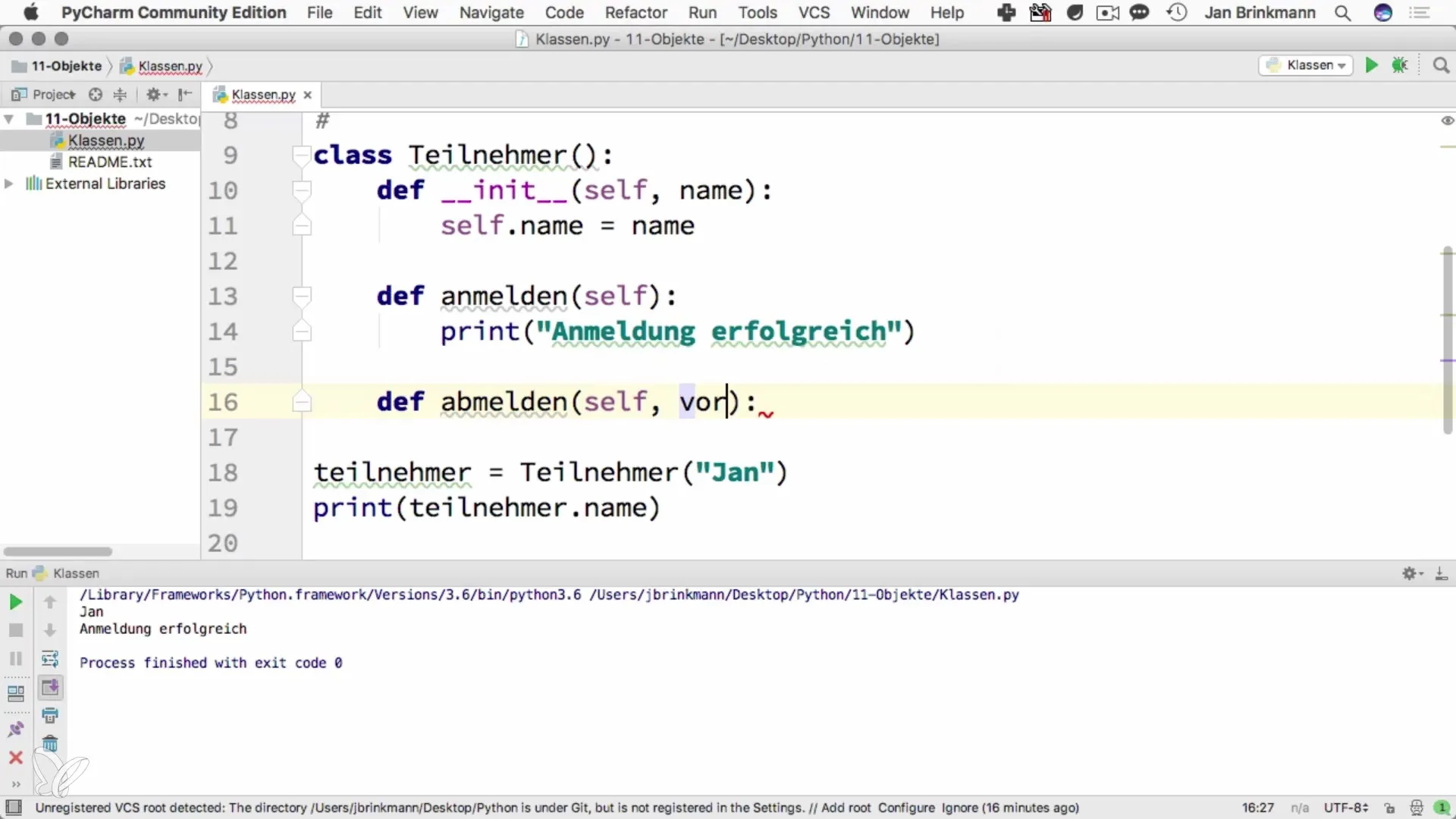
Here you analyze whether the participant wants to unregister early and output a corresponding message.
ScreenShot_320
This shows you how interactive your class and methods can become and how they respond to inputs.
In conclusion, we should summarize the basic principles we have learned. Defining classes involves defining attributes and methods that are relevant to the associated objects. The __init__ constructor is crucial for setting attributes when creating the object.
Summary – Creating and Using Your Own Classes in Python
By understanding and applying these fundamental principles, you can develop powerful and flexible programs in Python. You can create classes that encapsulate specific functions and properties to make programming more user-friendly and efficient.
Frequently Asked Questions
How do I define a class in Python?Use the keyword class, followed by the class name and a colon.
What is the purpose of the __init__ constructor?It is used to perform initializations when creating an object.
How do I access properties of an object?Use the dot operator followed by the property name, e.g. object.property.
Can I pass multiple parameters to a method?Yes, you can define methods that accept multiple parameters.
Can I use functions within my classes?Yes, methods are nothing more than functions that are bound to a class.


